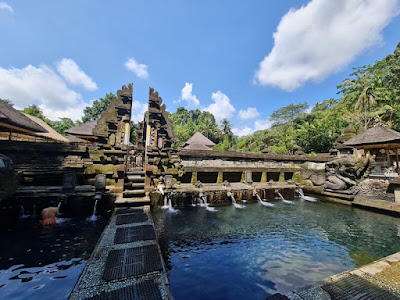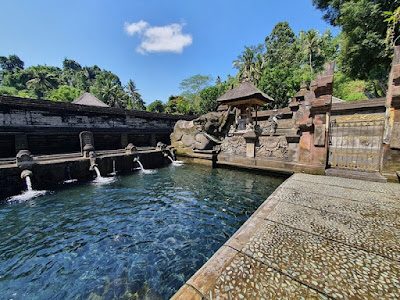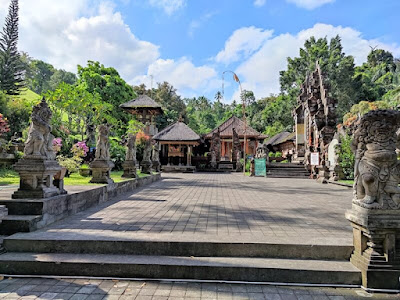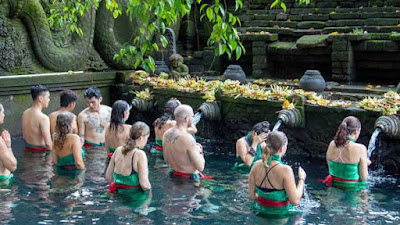Tirta Empul Temple: Bali's Spiritual Oasis for Tourists
Nestled amidst the lush landscapes of Bali, the Tirta Empul Temple stands as a testament to the island's rich cultural heritage and spiritual significance. Known as one of Bali's most revered Hindu temples, Tirta Empul offers a unique and immersive experience for tourists seeking to explore the island's religious traditions while immersing themselves in the tranquil beauty of nature. This article aims to delve into the historical and cultural significance of Tirta Empul Temple and shed light on why it has become a must-visit destination for travelers seeking a spiritual retreat.
Historical Background
Located in the village of Tampaksiring, about 30 kilometers northeast of Ubud, Tirta Empul Temple dates back to the 10th century during the Warmadewa dynasty. The temple was built around a natural spring known as the "Holy Water Spring," which is believed to have curative properties and is used for purification rituals. Legend has it that the spring emerged from the ground when the Hindu god Indra pierced the earth to create a fountain of immortality.
Spiritual Significance
Tirta Empul holds immense religious significance for the Balinese Hindu community. It is believed that bathing in the sacred waters of the spring can cleanse the body, mind, and soul, as well as cure illnesses and purify negative energies. Visitors can participate in the melukat ritual, which involves a series of prayers, offerings, and bathing in the holy spring under the guidance of a Hindu priest. This immersive experience provides an opportunity for tourists to connect with the spiritual side of Bali's culture and witness the devotion of the local people.
Architectural Beauty
Apart from its spiritual allure, Tirta Empul Temple captivates visitors with its stunning architecture. The temple complex features a series of courtyards, pavilions, and bathing pools adorned with intricate carvings and statues. The Balinese architectural style, with its meticulous attention to detail, is on full display, showcasing the artistic prowess of the island's craftsmen. As tourists explore the temple grounds, they can marvel at the blend of traditional Balinese design elements and Hindu symbolism that adorn every corner of Tirta Empul.
Exploring the Surroundings
Tirta Empul Temple's picturesque location adds to its charm. Surrounded by lush greenery, rice fields, and scenic landscapes, the temple offers a serene and tranquil atmosphere, perfect for introspection and meditation. After the spiritual rituals, visitors can take a leisurely stroll through the nearby village and interact with the friendly locals, gaining insights into their daily lives and customs. The temple is also located close to other notable attractions such as Gunung Kawi, a complex of ancient royal tombs, and the stunning Tegalalang Rice Terrace, allowing tourists to create a well-rounded itinerary.
Preservation and Respect
To ensure the preservation of Tirta Empul Temple's cultural and spiritual heritage, it is essential for visitors to show respect and observe the temple's rules and customs. Modest clothing is required, and it is customary to wear a sarong and sash provided at the entrance. Visitors are also encouraged to be mindful of their actions, maintain a peaceful demeanor, and follow the instructions given by the temple staff and priests.
Conclusion: Tirta Empul Temple stands as a testament to Bali's rich cultural heritage and spiritual traditions. Its historical significance, architectural beauty, and immersive spiritual experiences make it a must-visit destination for travelers seeking a deeper understanding of the island's cultural tapestry. A trip to Tirta Empul Temple not only allows tourists to witness the devotion of the Balinese people but also offers a serene retreat where one can find solace amidst the tranquil beauty of nature.
Conclusion: Tirta Empul Temple stands as a testament to Bali's rich cultural heritage and spiritual traditions. Its historical significance, architectural beauty, and immersive spiritual experiences make it a must-visit destination for travelers seeking a deeper understanding of the island's cultural tapestry. A trip to Tirta Empul Temple not only allows tourists to witness the devotion of the Balinese people but also offers a serene retreat where one can find solace amidst the tranquil beauty of nature.










